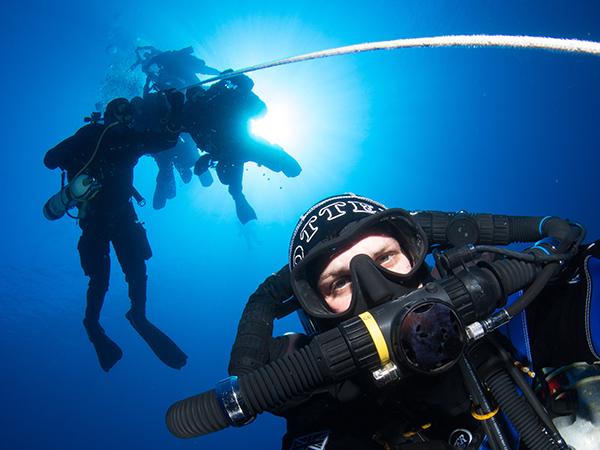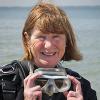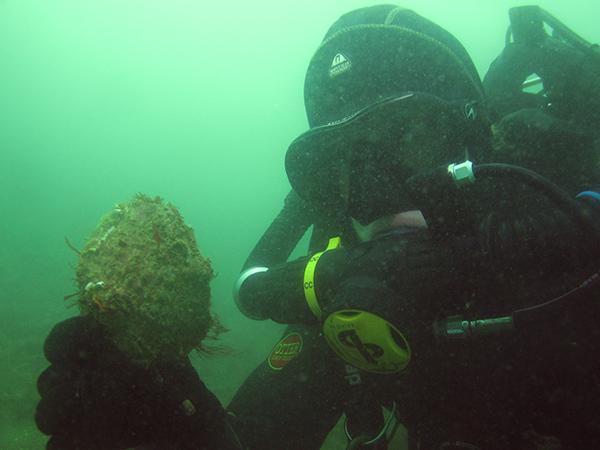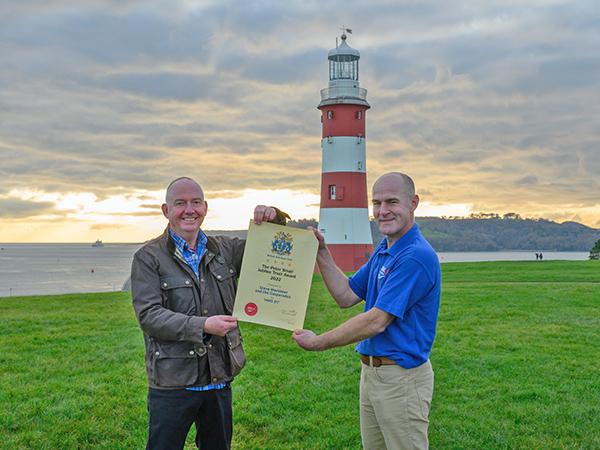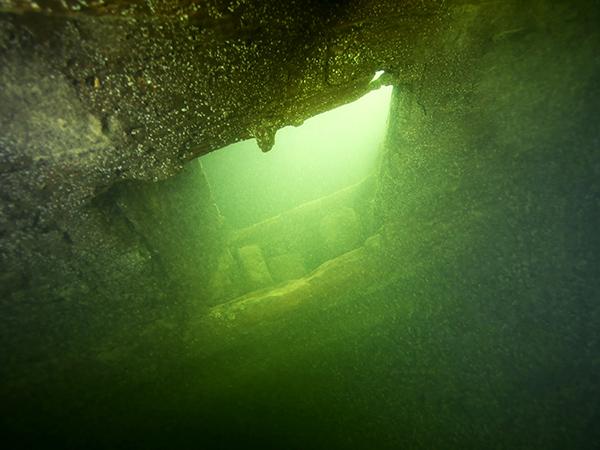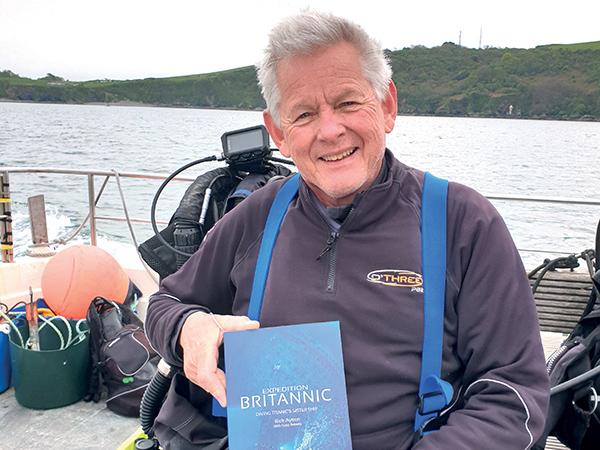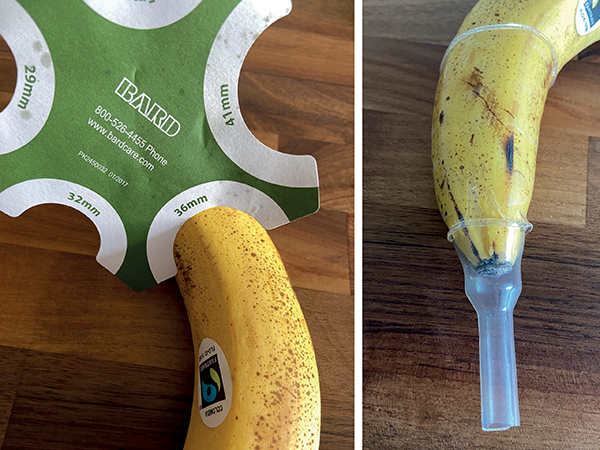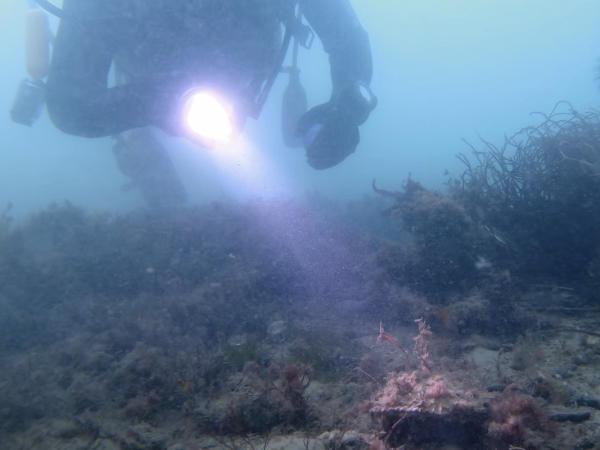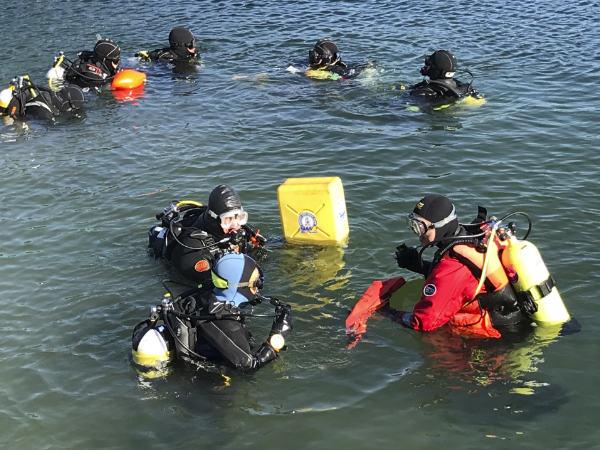The aim of the British Sub-Aqua Jubilee Trust grant awards is to enable quality underwater projects to be conducted.
The grants also help to raise the standard of projects undertaken by diving clubs, individuals or expeditions by providing financial assistance. The Jubilee Trust wishes to encourage both divers with no previous project or scientific experience as well as more experienced organisers and scientists.
A vital part of the grant award activities is to also make available to the general diving public the information generated by the projects.
Download project reports
The Jubilee Trust has made available reports of projects that have qualified for funding from the Jubilee Trust and have been awarded a grant.
If you feel you could undertake a project equal to or better than those reported below, and that fulfils the principles for Jubilee Trust funding then we would be delighted to hear from you. Find out more or contact us.
| Year | Project | Brief description and report |
| 2024 |
HMT Apley project |
A report on project dives to HMT Apley, a WW1 wreck lying to the east of the Needles off the Isle of Wight in a charted depth of around 34m.
Read the report
|
|
Klein Hollandia investigation |
Report on the identification of an unknown wreck off Eastbourne off the Sussex coast, which was designated under the Protection of Wrecks Act (1973) in 2019. At the time of designation, it was believed that the wreck was most likely a Dutch warship dating to the 17th century.
Read the report
|
|
|
Project Solent Warships |
This project field report covers fieldwork conducted in the eastern Solent in search of the wrecks of three Royal Navy ships:
Edgar,
Newcastle and
Nassau and an additional unknown wreck site inside Chichester Harbour.
Read the report
|
|
| 2023 |
Bumps in the Bay 2 project 2023 |
The conclusion to a research project on the large, circular seafloor anomalies along the Jurassic Coast.
Read the report
|
|
University of Glasgow Thailand 2022 Expedition |
Three research projects were undertaken: a terrestrial project studying amphibian populations, and two SCUBA-projects, one studying the impact of live coral cover on finfish abundance, and another on the densities and distributions of corallivorous
Drupella snails.
Read the report
|
|
|
GAD8 Protected Wreck survey |
This project proposed to produce a baseline survey of the Protected Wreck Site known as the Goodwins and Downs wreck site number 8 (GAD8). It was tentatively identified as the
Carlisle (lost c.1700) as it was the only wreck site off Deal that could be considered to be this vessel.
Read the report
|
|
|
HMS Cobra |
Shipwrecks of the River Humber found this vessel on 16 September 2021 in two parts, two point five miles apart after searching for her since 1997.
Read the report
|
|
| 2022 |
Operation Oyster report |
A citizen science project that is currently supporting seabed restoration activities by locating remnant native flat oyster populations and recording where these are in databases accessible by the scientific community. The data collected could help decide where to place restoration projects which in turn may require the collection of genetically diverse native flat oysters. Read the report |
|
Diver surveys at Berwickshire Marine Protected Area |
The aim of this inaugural project week was to explore and build potential collaboration opportunities between Project Baseline UK and BLUE. Project Baseline UK divers aimed to gather survey data to support BLUE’s ongoing conservation efforts in Berwickshire, and identify the scope of potential future expeditions. Read the report | |
| 2021 | Project Baseline Midlands Pools |
Citizen scientists recording change in underwater environments and engaging with scientific, conservation and government entities to advance the restoration and protection of our natural and cultural treasures by recording, monitoring and helping to preserve water-filled quarries within Leicestershire and Warwickshire. Read the report. |
| Visualising the Queen of Sweden |
An undesignated site assessment of the historic wreck site of the Drottningen af Sverige, known locally as the Queen of Sweden, to inform HES advice to the Scottish Government for designating the site as a Historic Marine Protected Area (HMPA) under the Marine (Scotland) Act 2010. Read the report. |
|
| Messerschmitt Bf110 |
The process of re-locating, identifying and collating the information available to tell the story of the wreckage and crew of a World War II German Messerschmitt Bf110 fighter-bomber that was shot down off the Dorset coast in 1940. Read the report. |
|
| 2020 | Bumps in the Bay |
Isle of Purbeck Sub-Aqua Club research project on large, circular seafloor anomalies along the Jurassic Coast. Read the report. |
| 2019 | Operation Dakota |
In 1997 divers located the site of a plane and identified it as a possible DC3/C-47. It was this projects intention to relocate and record the plane over several weekends to produce a baseline 3D photogrammetric survey. Read the report |
| Ship Rock Selsey |
A report on the wrecks of two wooden sailing barges and their cargo of stone. Read the report |
|
| Project Highball |
In 2017 East Cheshire Sub Aqua Club (ECSAC) led a project to survey, locate and ultimately raise two Highball Bombs from Loch Striven in Argyll and Bute, Scotland. This project ran two expeditions in 2018 and 2019 to revisit the site of the bombs and complete a photographic survey of the target area and specifically create a 3D Photogrammetry Model of a highball bomb. Read the report |
|
| 2018 | Exploring the Great Fossil Mine of the |
This report discusses the results of two weeks of diving investigations during the summer of 2018 for submerged landscapes offshore Happisburgh, Norfolk, the earliest site of human occupation in Northern Europe. Read the report. |
| Gun Rocks - Cannon Site project | Tyneside 114's asscociation with the cannon Gun Rocks that began in 1970. Read the report. Watch the video of Gun Rocks dive trail Seasearch Project. |
|
| The Undulate Ray Project | Identifying individual fish at a ray hotspot along the Dorset coast. Read the report. | |
| Mewstone Cannon Site Project | BSAC Clubs joined together to run a project to investigate two cannons lying in a gully on the Mewstone Ledge with another gun lying nearby. Read the report. | |
| Project CATO | Project CATO has sought to clarify the remains of a wreck on the seabed that was listed as that of an Auk/Catherine class minesweeper. Read the report. | |
| 2017 | Project Cardonnet | Report of WW2 wrecks of the Banc du Cardonnet, Normandy by Southsea Sub-Aqua Club. Read the report. |
| SS Faith | A report on the investigation by members of the British Sub Aqua Club of the remains of an early screw steamship sunk off the Isle of Wight in 1855. Read the report. | |
| Seasearch Exploratory Survey in the Channel Islands | Seasearch is a marine habitat and species recording programme for volunteer sports divers and operates throughout Britain and Ireland. Read the report. | |
| 2016 | The Black Bream Project | Revealing the secrets of black bream breeding behaviour off the Dorset coast. Read the report. |
| Operation Man-O-War: imaging and recording the Stirling castle | This project surveyed the Protected Wreck Stirling Castle with a High Resolution Multi-Beam system which was then ground truthed by diving the site. Read the report. | |
| Start Point Survey | This Start Point project documents the research carried out by the team on the inshore shipwrecks on the South Devon coast. It covers the area between Start Point and Prawle Point. Read the report. | |
| 2015 | Dragon Wreck | The search for the “Dragon”, a small armed merchantman and “Privateer” of 196 Tons. Little has been documented in terms of its history and wrecking. The ship sank off South Devon but the actual location remained a mystery for some time as its secrets lay metres beneath the sand until a winter storm uncovered some fragments of the wreck, including some cannon, in 1991. Read the report. |
| Mulberry 70 | Report on investigations of the remains of the artificial harbours code-named ‘Mulberry’ which assembled along the south coast of England prior to Operation Neptune and D Day. Read the report. | |
| 2014 | Bigbury Bay Survey | This project has evolved out of efforts to locate the remains of the Armada hospital ship, the “San Pedro El Mayor” reported to have been lost in Bigbury Bay in South Devon. This project involved using electronic equipment to locate iron objects on the seabed as well as searching the relevant beaches with metal detectors. Read the report. |
| Unknown Aircraft, Mablethorpe | The aim of this project (Unknown 4 engine Aircraft) is to examine and record the wreck site of a 4 engine British bomber from the Second World War which crashed into the North Sea with the loss of all crew. Read the report. | |
| Air Search rescue craft, Cuckoo, lying off Selsy | This project investigates the small, intact wreck found off Selsey known as Cuckoo. A full 3 dimensional survey of the wreck was carried out to positively identify the wreck. Read the report. |
|
| 2013 | German Sub - Seehund | Project Seahunde proposed to locate, positively identify then record the physical remains of U5377 a unique German midget submarine. U5377 is the only known operational Seahunde to have been sunk in UK territorial waters during an action (11 March, 1945). Read the report. |
| Guildford BSAC HMT Pine Project | This project offered huge potential to reinvigorate the club through diving, training and research. It aims were to promote team work, personal and club development, and to raise awareness of the captivating story of the Pine and its people and to involve as many club members and their families as possible. Read the report. | |
| The Tea Clipper 'Gossamer' | This project follows up on the work conducted by Stephen George in the 1970’s, by re-locating the wreck along the coast near Prawle Point in Devon. The project team wanted to complete a site plan as well as establishing what was left of the wreck, the Tea Clipper “Gossamer” lost in December 1868. Read the report. | |
| Jurassic shark 4 | The ultimate aim of the Jurassic shark project is to provide the scienttific basis for an extension to the Eastern Pacific seascape corridor. Read the report. | |
| Lofoten Islands, Norway | This project was to survey the marine life and wrecks around the base of operation to 'Capture a moment in time' and to generate a baseline against the changes in the marine enviroment can be monitored in future years. Read the report. | |
| 2012 | Dart Cannon Site | This report looks at the history of Dartmouth in order to try and establish where these cannons came from. During our diving and research, we did discover that there has been a lot of shipping activity in the area of Kingswear Castle and this has given us some clues as to the how the cannons may have found their resting place. Read the report. |
| Gull Rock Wreck Iona II licensee site report | This project aimed to investigate the 15th/16th century Gull Rock Wreck site, off Lundy Island. Initially, a desk-based assessment of the site was conducted which was subsequently surveyed in June 2013. The survey utilized a team of 5 divers comprised of Bournemouth University students and alumni to complete 36 dives. Read the report. | |
| Wrecks of the Solent Project by SADSAC | The project by Solent Archaeological Divers Sub Aqua Club (SADSAC) in 2011 had two main aims. Firstly, to create an archaeological record of four wrecks in the area of the Western Solent for which there were few records. The depths ranged from 20 metres to 39 metres and so would appeal to a range of divers. Secondly, to produce a series of drawing and images that would help recreational divers know which parts of the vessel they were looking at and what functions those parts once performed. Read the report. | |
| 2011 | HMS Venerable Project | This report includes not only the state of the site today but also some history of the ship, as well as artefacts which are known to have been recovered in the past and are now in the possession Steve Clarkson (report writer). Read the report. |
| Korcula project | In 2009 substantial pottery remains were found in a number of locations following on from previous investigations. One of the richest areas was on the southern side of Korcula at U. Przina. The main aim of this project was to locate ceramic distributions, map them and identify, where possible, the types of ware present. Read the report. | |
| The Moor Sands and Salcombe 'B' protected wreck sites | This project was to continue on from the area of finds during 2009/10 in order to establish the dispersal limits for the finds related to the 900BC collection. Read the report. | |
| The Rivillagigedo Archipelago, a critical habitat for migratory sharks | This report is about the first study of sharks in the Rivillagigedo and other islands to generate baseline infirmation and to implement management strategies for the conservation of sharks. Read the report. | |
| Archaeological survey of wreck sites in the Solent and surrounding area | This project was designed to create an archaeological record for sites where there is little or no current information avalilable regarding their condition, extent and features. Read the report. | |
| 2009 | Hunter Sayer | Comparative effects of habitat complexity Read the report. |
| Neptune Wrecks | Southsea Suba-Aqua Club are proud to present this report as a record of all the activities and investigations into local wrecks in the Portsmouth to Selsey Bill area. Read the report. | |
| 2008 | Tanks and bulldozers | This project far exceeded the aims of the project in many respects. What started off as an ambitious branch and personal challenge has struck a chord with manynin the diving comunity and beyond, bringing the activities of the branch and the mystery that surrounded the site into the public domain. With the support of many, the mystery of how 2 tanks , 2 bulldozers and a gun came to rest 8 miles south of Bracklesham, West Sussex has at last been solved. Read the report. |
| 2008 | Jurassic Shark 2 | This project was a Joint Services expedition to Guadalupe and the Revillagigedo Islands, off the Pacific coast of Mexico and was entirely based on board the live-aboard boat, Sea Escape. The aim was to electronically tag great white sharks, scalloped ammerhead sharks and whale sharks. Read the report. |
| 2007 | Quantifying the environmental benefits of artificial reefs | The present study offers an excellent opportunity to gain quantitative information of the differences in animal abundance associated with artificial and natural reefs. Read the report. |
| 2006 | Eastern Solent Marine Archaeology | This project aims to involve volunteer divers in the targeted investigation, recording, presentation and conservation of the submerged cultural heritage. Read the report. |
| 2006 | WreckMap Britain | This was a new initiative from the Nautical Archaeology Society (NAS), with the support of SeaSearch, to record, analyse and disseminate basic physical and biological information about UK wreck sites. Read the report. |
| 2005 | Brighton Marina wreck | The aim of this project was to recover as much of the previously unpublished surveys as could be found and place them in the public domain. In addition a non-intrusive geophysical survey was to be carried out along with the limited diving to confirm 'ground truth' for any anomalies discovered. Read the report. |
| 2004 | HMS Royal George | The aim of the project was to use the various sources availbale to model the wreck and its surrounding seabed throughout its destruction and as a data set to be used in ideas about site formation processes. Read the report. |
| 2002 | Exercise Mayan Finn | After three severe hurricanes in Belize the expedition began to investigate damage to the reef systems caused by this series of natual disasters. Read the report. |
| 2001 | Coral awareness & research expedition: Madagascar | The 2001 expedition consisted of two phases, both in South Madagascar, concerntrated on two very different reef systems. Read the report. |
| 1998 | Bay Islands expedition | A joint British-Honduran expedition to the Bay Islands of Honduras with members from the Universities of Newcastle, Bangor, Heriot-Watt and the Universidad Nacional Autonoma de Honduras. Read the report. |

